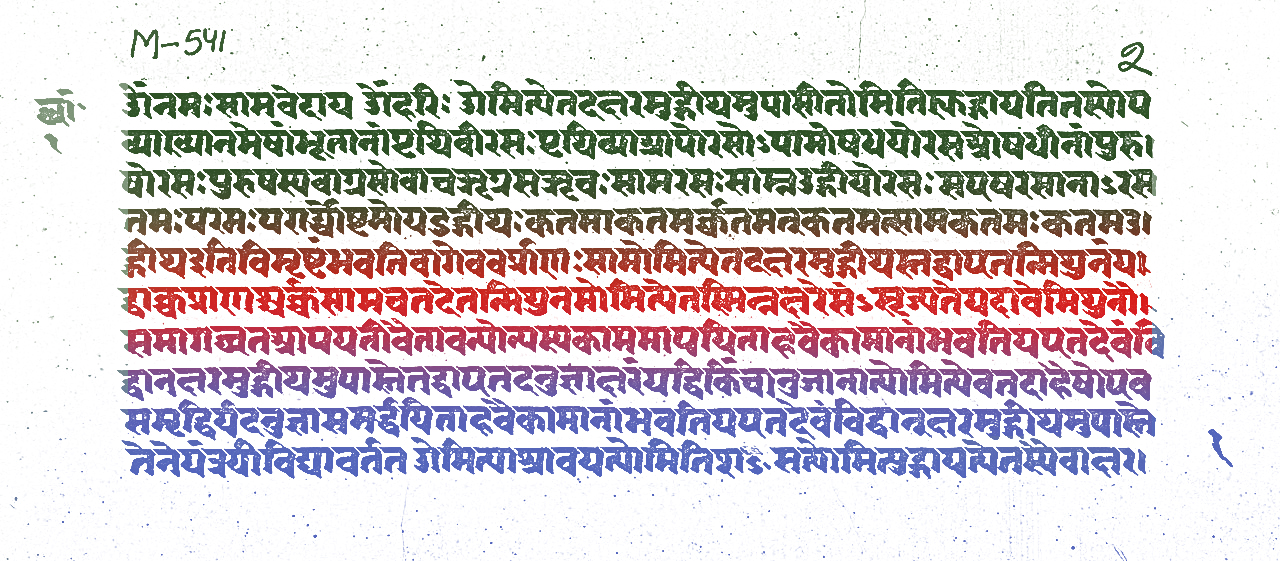The Chandogya Upanishad explains the unison of individual life with the universe and the importance of understanding this. It also includes various techniques of meditation to achieve that.

What is Upanishad?
Upanishad is the scriptures that connect the knowledge given in the four Ved to common people’s lives and traditions. They are called Upanishad (sitting down closely) because Upa means ‘near’ and Shad means ‘to sit’. Many of the Upanishads are written in the style of a conversation between a Guru and a Shishya sitting near the feet of the teacher. Upanishad are aimed at bringing prosperity, enlightenment, and most to the common people’s lives. Every Upanishad is focused on the knowledge covered in one particular Veda from Rigveda, Samaveda, Shukla Yajurveda, Krishna Yajurveda, and Atharvaveda.
The legacy of Chandogya Upanishad
Chandogya Upanishad is one of the oldest and most extensive Upanishad in ancient Indian scriptures. Its name is based on ‘Chand or Chhand’ – which is a type of poetic meter. All the verses of Chandogya Upanishad are written in this prosody. Chandogya Upanishad is considered to be an anthology – looking at its extensive text and references. That’s why it is difficult to identify one author of this Upanishad. It is believed to be written around 6th to 7th century BCE by different scholars.
Structure of Chandogya Upanishad
Chandogya Upanishad consists of the last 8 of the 10 chapters of Chandogya Brahman. Chandogya Upanishad is divided into eight Prapathak or Chapters. Every Prapathak is then subdivided into Volumes which have different numbers of verses in it.
The teachings of Chandogya Upanishad
Chandogya Upanishad guides us about the true nature of life and existence. It identifies life as a universal self Vishva-nar with 6 organs – including head, eye, breath, body, lower belly, and feet. Each of these organ is connected with 6 universal phenomena – including heaven, sun, air, space, water, and earth respectively.
It also dwells upon the Panchagni vidya, the five Prana [Prana, Vyana, Apana, Samana, and Udana], and the journey of a soul after death. The Chandogya Upanishad stresses upon the need to attain knowledge about oneself to experience life to the fullest.
- The first chapter enlists various aspects and interpretations of AUM. It also explains the importance of doing meditation on AUM from different perspectives
- The second chapter talks about meditation on different organs of Sama – individually as well as in different combinations.
- The third chapter is on Upasana of the sun as well as other different meditations for achieving different benefits.
- The fourth chapter narrates the story of King Janushruti and Raikva Muni. The principles of Samved are effectively explained through this story.
- The fifth chapter extensively covers the concept of five fires – Panchagni, which links an ordinary life to the universal existence. It also dwells upon the journey of a soul after death.
- In the sixth chapter, the earlier concept of oneness with the universe is explained through the story of Uddalak and his son Shvetketu.
- The seventh chapter talks about the importance of knowing self and self-knowledge. It is narrated in the form of a conversation between Sanat Kumar and Narad muni.
- The eighth chapter explains a very interesting technique of meditating while focusing on the heart. It leads to deliberations within the mind and the ultimate realization.